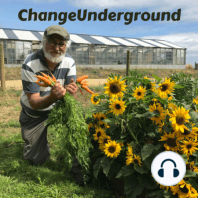15 min listen
53 #worldorgaincnews 2017 02 27
ratings:
Length:
8 minutes
Released:
Feb 26, 2017
Format:
Podcast episode
Description
Links WORLD ORGANIC NEWS in the Australian Podcast Awards Click here Five Notable Organic Gardening Methods | Garden Variety http://wp.me/p5Cqpo-ej0 Keyhole Garden Images https://www.google.com.au/search?q=keyhole+gardens&rlz=1C5CHFA_enAU695AU695&espv=2&biw=1296&bih=648&source=lnms&tbm=isch&sa=X&ved=0ahUKEwjiyL_c8aTSAhXKjpQKHfEgCuQQ_AUIBigB Hugelkultur Images https://www.google.com.au/search?q=keyhole+gardens&rlz=1C5CHFA_enAU695AU695&espv=2&biw=1296&bih=648&source=lnms&tbm=isch&sa=X&ved=0ahUKEwjiyL_c8aTSAhXKjpQKHfEgCuQQ_AUIBigB#tbm=isch&q=hugelkultur&* Lasagna Garden Images https://www.google.com.au/search?q=Deep+Mulch+Gardening&rlz=1C5CHFA_enAU695AU695&espv=2&biw=1296&bih=648&source=lnms&tbm=isch&sa=X&ved=0ahUKEwiY7JD98qTSAhVDtpQKHQPbAWIQ_AUIBygC#tbm=isch&q=+Lasagna+Gardening **** This is the World Organic News for the week ending 27th of February 2017. Jon Moore reporting! This week we focus upon five gardening ideas! These come from the blog post: Five Notable Organic Gardening Methods by Garden Variety. Four of these techniques are no-dig and one involves intensive digging. I assume by now you know my preference is for no-dig but I realise there are people out there happy to bend their backs and turn the soil. We’ll begin with the digging system: French Intensive Gardening. The post gives a good description of the process. Quote: The French Intensive Gardening method was re-established in a two acre garden plot just outside of Paris in the late 1800’s. The purpose was to grow an abundance of vegetables year round in a several mid-sized growing beds for the home and markets. Generally, a wide bed (5ft in width) is dug approximately 12 inches in depth. The soil from this bed is placed to the side. At the bottom of the trench, the soil is turned another 12 inches and then loosened with a sturdy garden fork and 1/3 yard of compost added. An additional bed is dug utilizing this same technique. After this is done, put the reserved soil from the first bed is placed back into the trench and mixed with 1/2 yard of compost (or manure). End Quote. This double digging and moving soil about can be done within the confines of a single bed. A spade’s width of soil is removed at one end. The soil under it is dug and loosened. The next spade width of soil is turned onto the first and the second dug and loosened and so on until the end of the bed is reached and the first soil removed is added to the last spade width of the garden bed. Manures and compost being added throughout the process. As you can see this system requires a large amount of effort and it comes from a time when labour costs, let alone personal time costs, were much lower. The idea of double digging was to aerate the soil and to bury potential weed seeds. The bed was left bare to the elements until the plantings covered the surface area. The system works and is productive. It provided food all year round and that’s a good starting point for any system. Sorry you listeners in Canada, the Northern parts of the USA and Scandinavia. I won’t even glance at our listeners in Russia. The annual soil turning and the surface of the garden bed left exposed seems to point against this method. I’ve heard it argued that this a good first year technique, especially when the soil is compacted and/or a pan have formed below the surface. Masanobu Fukuoka, of The One Straw Revolution, faced just this problem in his orchard. He overcame this not by digging but by broadcasting daikon radish seeds and allowing this three foot monster radishes to loosen the soil for him. Your choice. Now to the no-dig methods. We start with Keyhole Gardening. This system relies on a garden bed with a walkway cut into it. Usually circular in form The beds are uber raised to waist level. The post explains: Quote: Keyhole Gardening was introduced in Africa by the Consortium for Southern Africa Food Security Emergency (C-SAFE) to help ailing and frail Africans grow their own produ
Released:
Feb 26, 2017
Format:
Podcast episode
Titles in the series (100)
Supplemental 2 #worldorgnicnews 2016 06 09: Sponsored by www.jembiscuits.com Transcript: htt… by ChangeUnderground
